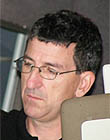|
|
This topic comprises 4 pages: 1 2 3 4
|
|
Author
|
Topic: Cue marks: scribe circles or grease pencil?
|
Paul Burt
Film Handler
Posts: 46
From: San Francisco, CA, United States
Registered: Apr 2006
|
 posted 05-11-2009 11:17 AM
posted 05-11-2009 11:17 AM




I work at a number of venues where 2000' changeovers are essential for various reasons. No problem, I've dome this for years, but there is a new aspect to this: fewer and fewer film have cue marks from the labs. Most European prints and virtually all Asian prints are now struck without cue marks. The question is, which is better for the print, scribing cue marks, or using grease pencil? At the last festival I worked I would say about 60% of the prints without lab cues came in with scribed circles and the rest with grease pencil cues. (Since we used platters at this festival it was irrelevant, I didn't have to add any cues, but at my next festival we do changeovers & I expect I'll have to add marks to at least some of the prints)
Downsides: scribed cues can never be removed which may be a problem for future preservation. Grease pencil is sometimes too visible on the screen although it can be removed easily. Personally I prefer grease pencil cues but they can be almost invisible on dark scenes, and at one festival I work, films will be run in various venues and all the operators have to see them, not just me.
How do the members here weigh in on this?
| IP: Logged
|
|
|
|
|
|
|
|
Jack Ondracek
Film God

Posts: 2348
From: Port Orchard, WA, USA
Registered: Oct 2002
|
 posted 05-11-2009 12:52 PM
posted 05-11-2009 12:52 PM





Personally, I never ever used a cue scribe. Back in my changeover days, that gadget, and exacto knives were used so much, some films looked pretty horrible.
When I worked changeover booths in Seattle, some of the union guys used a technique I thought was pretty effective.
We'd cut strips of masking tape... about 1/16 inch X the width of the tape... less than an inch, as I recall.
Wrapping one of those strips around the edge of the film, at the frameline, causes a noticeable click when it runs through the gate... not unlike the old glue splices we used to use. We'd place the audible cues just before the visual one. It made finding dark cues much easier, because you knew it was coming right after the click(s).
As I recall, we used 2 clicks for the motor cue (something like 8 frames apart), and one click at the changeover. Curtain cues were 3 clicks.
I don't doubt that some here might recoil in offense that one would use a technique like this... but it worked back then, seemed to cause no damage, and the strips were easily removed when the time came.
Maybe using the artists tape would be a good alternative?
| IP: Logged
|
|
|
|
|
|
|
|
Tony Bandiera Jr
Film God
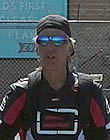
Posts: 3067
From: Moreland Idaho
Registered: Apr 2004
|
 posted 05-11-2009 03:38 PM
posted 05-11-2009 03:38 PM




Scribe cues at the proper locations, always!! Grease pencil cues, no matter how small will always look horrible on screen. You simply cannot make them the exact same size and placement so that they don't dance about during the four frames. And the scribe cue is smaller than any possible mark from a grease pencil that would be of any use.
A properly scribed cue is NOT noticeable to the vast majority of audiences. (Over 90% of the audience at UC Irvine I've spoken with didn't even know we were running two projectors and never saw any cues..when they were properly placed and made. They DO notice the grease pencil cues though..every time.)
quote: Jack Ondracek
Back in my changeover days, that gadget, and exacto knives were used so much, some films looked pretty horrible.
Jack, it's NOT the scribe that made it look so horrible, it is the incompetent boobs who added cues because they were too fucking stupid to learn how to do a properly timed changeover. It really annoys me when people say things like that when you yourself know it's not the scribe that made the problem. It's like those who say platters are harder on film than reel-to-reel..bullshit.
I don't like the idea of the "Click" cues, as they will cause noticeable image jump and it would be possibly for the soundtrack to mask them. (You do changeovers with the monitor loud enough to hear the soundtrack, right? To avoid cutting off dialogue? )
quote: Jack Ondracek
As I recall, we used 2 clicks for the motor cue (something like 8 frames apart), and one click at the changeover. Curtain cues were 3 clicks.
So basically you had two film jumps at each motor cue and three at each curtain cue? And you thought that to not be as distracting as a properly scribed cue? You're right, I recoil at that. ![[Eek!]](eek.gif)
quote: Jack Ondracek
Maybe using the artists tape would be a good alternative?
The alternative for the motor and changeover cues would be to use the scribe, and for your curtain cues use your skills and a pre-run of the reel to judge by image or soundtrack when to hit the curtains. That's exactly what we had to do on the military base I started my film career at, we were not allowed to put any cues on the National Anthem trailer or the preview and feature snipes.
I would like to kill whoever came up with the "hole punch" cue maker. There is one or two out there that makes smaller holes than the standard paper punch...perhaps those were intended for editorial or lab use only, but I have run into them on release prints.
| IP: Logged
|
|
|
|
|
|
|
|
|
|
|
|
Jack Ondracek
Film God

Posts: 2348
From: Port Orchard, WA, USA
Registered: Oct 2002
|
 posted 05-11-2009 08:06 PM
posted 05-11-2009 08:06 PM





quote: Tony Bandiera Jr
I don't like the idea of the "Click" cues, as they will cause noticeable image jump and it would be possibly for the soundtrack to mask them. (You do changeovers with the monitor loud enough to hear the soundtrack, right? To avoid cutting off dialogue? )
I don't recall image jump being a major issue. Perhaps the width of the cues were small enough that they didn't cause the same jump that a glue splice would have. They were wrapped around the non sound-track side, and normally didn't make it halfway into the frame. In any case, it was a long time ago, and the practice was endorsed, and taught me by senior members of the Seattle local. Hard to argue with the wisdom of the time.
As for booth monitor level... I don't recall ever working in a booth that was so loud you had to blast the monitor to the point of masking everything else. My recollection was that clickers were easily heard. Maybe it was because I was so close to the projector?
Past that, I have no argument with your views on the matter. Personally, I never had much trouble seeing even the faintest cues, and some of them were blended in pretty well. The only use I ever had for a cue marker was when we'd get sub-run films that had been chopped to bits by previous theatres. The clickers were widely seen as a backup tool, used to ensure the success of the changeover.
General aviation pilots are trained that avoidance of other aircraft is our personal responsibility. Scanning techniques are part of basic training. In my plane, I have an electronic gizmo that reads transponder signals from other nearby planes. It displays distance and direction information that I can use as a tool to assist that which is my primary means of observation... my eyeballs. The gizmo is not a legal substitute... only an augmentation. I suppose those of us who used clickers back then could view them in somewhat the same manner.
| IP: Logged
|
|
|
|
All times are Central (GMT -6:00)
|
This topic comprises 4 pages: 1 2 3 4
|
Powered by Infopop Corporation
UBB.classicTM
6.3.1.2
The Film-Tech Forums are designed for various members related to the cinema industry to express their opinions, viewpoints and testimonials on various products, services and events based upon speculation, personal knowledge and factual information through use, therefore all views represented here allow no liability upon the publishers of this web site and the owners of said views assume no liability for any ill will resulting from these postings. The posts made here are for educational as well as entertainment purposes and as such anyone viewing this portion of the website must accept these views as statements of the author of that opinion
and agrees to release the authors from any and all liability.
|

 Home
Home
 Products
Products
 Store
Store
 Forum
Forum
 Warehouse
Warehouse
 Contact Us
Contact Us




 Printer-friendly view of this topic
Printer-friendly view of this topic




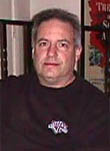
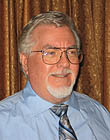



![[Big Grin]](biggrin.gif)



![[Eek!]](eek.gif)

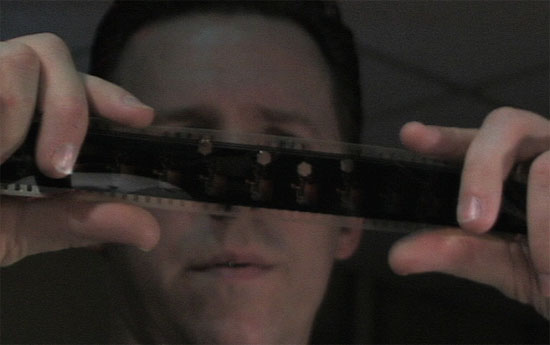
![[beer]](graemlins/beer.gif)

